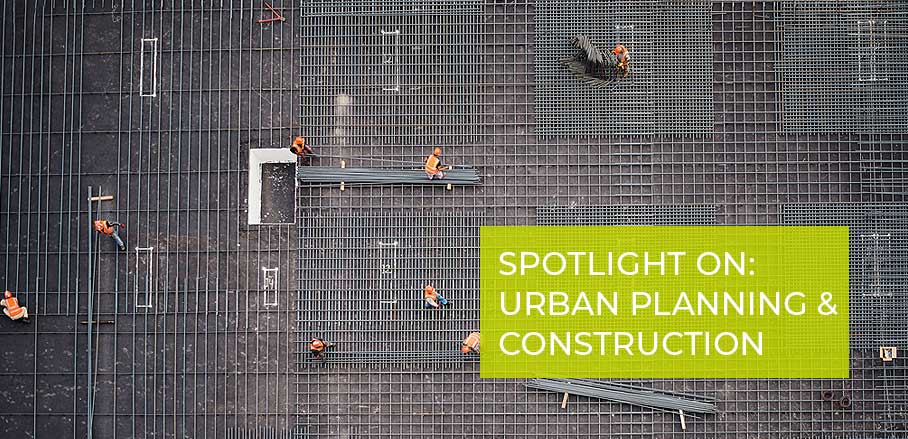Infrastructure and SDGs in Pietermaritzburg, South Africa
Pietermaritzburg, South Africa, commits to implementation of the SDGs. To this end, the city focusses on sustainable construction, always ensuring to align the SDGs with national policies.
Perched in the midlands valley, boasting ancient and modern infrastructure, architectured with pride and wisdom is Pietermaritzburg, the Capital of KwaZulu Natal, affectionately known as the “City of Choice”. In 2015, the states of the world signed the Sustainable Development Goals (SDGs), committing to work towards a sustainable, prosperous, and peaceful future. The City of Pietermaritzburg embraced the opportunity to implement the SDGs especially through infrastructure projects and other urban amenities contributing to the health of its citizens.
Policies
Adoption of the SDGs by the city came with its own problems such as the financing projects and the training of staff. Apart from being costly processes, another aspect to consider was the bureaucracy associated with politics in the provincial government: All projects and policies have to pass through the provincial legislature, which will vote on budget and staff training and can veto any decisions, before they can be implemented by the city.
South Africa has a plethora of home-grown development goals that have emerged during the last decade. They are encapsulated in national development plans and visions, making the addition of another policy challenging.
One example that springs to mind is the National Development Plan (NDP), South Africa’s long-term development plan. It expresses consensus on societal challenges, focuses on national planning processes and has the potential to implement development priorities in an effective way. In a way, the NDP is the country’s unpolished SDG goals that the city embraces through its municipal functions.
Infrastructure
Over the last two and a half years, the city of Pietermaritzburg has been implementing the Community Works Programme (CWP). The program, which is in sync with SDGs, is used to help build, repair, and maintain infrastructure around the city.
It addresses several SDG goals: It addresses Goal 1 – reduction of poverty – by employing the economically disadvantaged of the population, including residents of Masukwana, Tamboville and surrounding areas with poor households. Ensuring good working conditions, sustainable economic structures, and sustainable infrastructure, the CWP also supports SDGs 3,8 and 9.
Most construction companies rely on the financial pool of the CWP to adopt the SDGs in their operations. The municipality aims to contract construction companies that comply with the SDGs in their operations.
Construction Companies
Most Pietermaritzburg construction companies belong to the KwaZulu Natal Master Builders Association, which is an umbrella body for construction employers. Members of the association adhere to sustainability policies and accountability practices for urban development, as is exemplified in the following cases:
Motheo Construction is building state of the art residential flats that will feature “health parks” for walking and biking as well as play areas for children. Planting of trees is an essential ingredient for the project that comes at a time when the city is trying to enhance good living and fight climate change, complying with the SDGs.
Another notable development regarding SDGs, infrastructure, and the health of Pietermaritzburg citizens is the building of the National Prosecution Authority of South Africa, situated in the heart of the city. This infrastructure, once completed, will be energy self-sufficient, boasting solar rooftops, recycled water, and green balconies. The building is a joint venture between LDM and Nangoni construction companies.
Other notable infrastructure projects are located around the city, including the Umngeni Water project, the restoration of the Msunduszi museum, and the Riverside swimming pools. These projects, when completed, will strengthen the city’s move towards the SDGs and the health of its citizens
The water project, for instance, only employs people from disadvantaged backgrounds. The completion of the Msunduzi museum will add recreation opportunities for young people, thereby helping to fight crime in gang infested areas. The riverside swimming pool will be a haven of training and health improvement for city dwellers.
All these projects cater to various SDG goals such as ending poverty and hunger or creating healthy and sustainable infrastructure. However, it should be noted that the renovations and building of small projects are often done by small to medium contractors that do not observe SDGs as a whole, for example disregarding gender equality in their employment practices.
Challenges
Pietermaritzburg faces a number of challenges in aligning its infrastructure development plan with the SDGs.
For example, the plan was adopted before the 2030 Agenda. Superimposing the global agenda onto the local plan is politically problematic because it would be changing an already implemented plan, thus seriously damaging its legitimacy.
The country’s development plan explicitly seeks to address injustices resulting from South Africa’s apartheid past. This includes improving the poor quality of education for black people, strengthening national infrastructure, uniting the country, and creating employment.
This may leave a gap in aligning to the global goals, as government policies such as the National Development Plan focus only on some of the SDGs, but not on every single goal. As the SDGs and the NDP are still somewhat viewed as paralleling rather than complementing each other, implementation of the NDP could derail the city’s motivation to adopt the SDGs in their entirety.
Conclusion
There isn’t a panacea for aligning national and global development goals. It will remain a difficult thing to do. Yet, its difficulty doesn’t mean that it’s unimportant or that it’s impossible. Pietermaritzburg has been striving towards implementing the SDGs in its infrastructure projects, underlining that inclusive and sustainable development depends on coherent policies.
- Infrastructure and SDGs in Pietermaritzburg, South Africa - 30. April 2019
